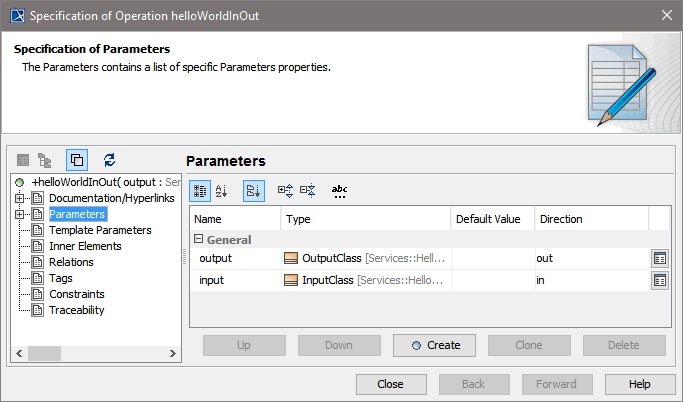Besides attributes, you can define operations on classes. These operations can be called within one xUML service, but not externally by other processes, clients, etc.
If you want to publish class interfaces, for instance as Web service interfaces, you need to give the class stereotype <<PortType>>. A port type accumulates operations that a client can call on a Web service. If you want to publish interfaces, for instance as SAP RFC modules or HTTP operations, the Bridge provides other appropriate stereotypes.
There are two types of classes:
A port type is a special kind of class, which has no attributes but only operations. Each operation must be assigned to an activity diagram of the UML model. Operations of a port type represent the interfaces of a Web service. Activity diagrams implement the behavior of these operations.
All "public" Web Services, which clients may access, must have a port type definition. This port type definition is required for generating the WSDL file later on.
Figure: Port Type Definition


Operations that are member of for example <<PortType>> classes are accessible via SOAP calls, if such a class is part of a <<SOAPService>> component. Another example are operations of <<SAPRFCModule>> classes, which are accessible by SAP ABAP programs if they are part of a <<SAPRFCService>> component.